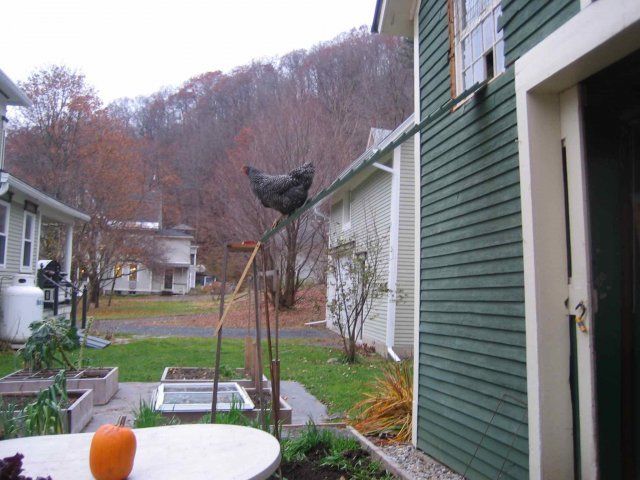Quote:
It's BYC.
 To quote my students, "That's how we roll."
To quote my students, "That's how we roll."
 You won't find another place like it online.
You won't find another place like it online.
Quote:
I think this is because those designs have been developed with the idea of using a smaller space "footprint." With the run under the coop, less space is used. These types of coops are often more popular for urban or small flock owners.
Quote:
Why not do some research on the National Weather Service site about temperature and humidity averages in your area year-round? Take into consideration extremes as well.
The enclosed area will also need to be kept cool with some form of ventilation. The chickens will go in there to roost and to lay eggs. It's important that the air circulates, especially because the top of a city building is usually quite warm with all that tar.
In the winter, you're going to get lots of snow and fierce winds up there. Remember, temperatures vary from ground level on up. Even several stories' height can make a difference.
I would suggest wrapping your run with tough plastic such as tarp or Visqueen in the winter. You can use a staple gun to tack it on, or tie the tarp on using the grommets and tough twine. If you find that one side is especially windy, consider creating a windblock from some wood or hay bales on that side of the run.
As you gain experience, you can make changes, as well.
It's BYC.


Quote:
I think this is because those designs have been developed with the idea of using a smaller space "footprint." With the run under the coop, less space is used. These types of coops are often more popular for urban or small flock owners.
Quote:
Why not do some research on the National Weather Service site about temperature and humidity averages in your area year-round? Take into consideration extremes as well.
The enclosed area will also need to be kept cool with some form of ventilation. The chickens will go in there to roost and to lay eggs. It's important that the air circulates, especially because the top of a city building is usually quite warm with all that tar.
In the winter, you're going to get lots of snow and fierce winds up there. Remember, temperatures vary from ground level on up. Even several stories' height can make a difference.
I would suggest wrapping your run with tough plastic such as tarp or Visqueen in the winter. You can use a staple gun to tack it on, or tie the tarp on using the grommets and tough twine. If you find that one side is especially windy, consider creating a windblock from some wood or hay bales on that side of the run.
As you gain experience, you can make changes, as well.








